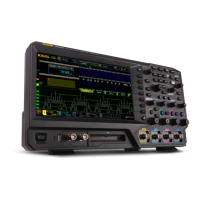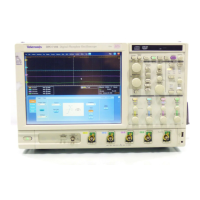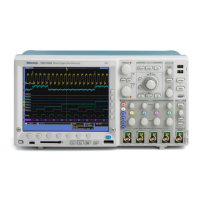Command Syntax
Math Waveform
Mnemonics
Commands can sp
ecify the mathematical waveform to use as a mnemonic in
the header.
Table 2-11: Math Waveform Mnemonics
Symbol Meaning
Math<x>
A math waveform specifier; <x> is 1 through 8.
Reference Waveform
Mnemonics
Comm
ands can specify the reference w aveform to use as a mnemonic in the
header.
Table 2-12: Reference Waveform Mnemonics
Symbol Meaning
REF<x>
A reference waveform specifier; <x> is 1 through 8.
Waveform Database
Mnemonics
Commands can specify the reference waveform to use as a mnemonic in the
header.
Table 2-13: Waveform Database Mnemonics
Symbol Meaning
WFMDB<x>
A waveform database specifier; <x> is either 1 or2.
Rules
The following rules apply when entering commands:
You can enter commands in upper or lower case.
You can precede any command with white space characters. White space
characters inc
lude any combination of the ASCII control characters 00 through
09 and 0B through 20 hexadecimal (0 through 9 and 11 through 32 decimal).
The instrument ignores commands consisting of any combination of white
space characters and line feeds.
Abbreviating
You can abbreviate many instrument commands. Each command in this
documentation shows the abbreviations in capitals. For example, you can ent
er
the command ACQuire:NUMAvg simply as ACQ:NUMA or acq:numa.
Abbreviation rules may change over time as new instrument models are
introduced. Thus, for the most robust code, use the full spelling.
If you use the HEADer command to have command headers included as part
of query responses, you can further control whether the returned headers are
abbreviated o r are full-length with the VERBose command.
2-8 DSA/CSA/TDS8X00/B Series Programmer Manual

